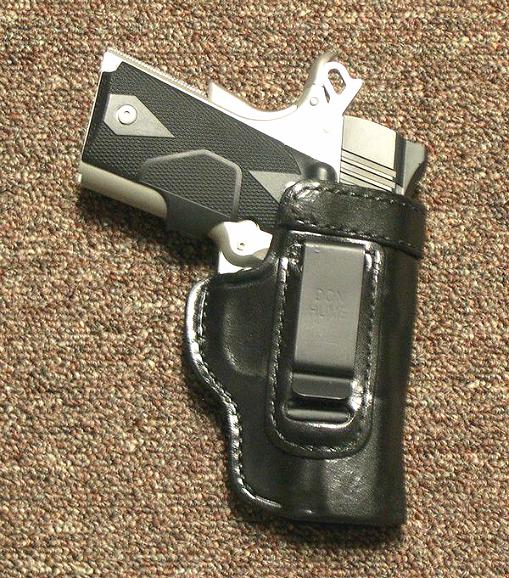As more and more shooters apply for concealed carry permits, the need for concealed carry holsters is going to become more important. By concealed carry, I’m talking about a holster or carrying method that allows the weapon to worn in such a manner that it is completely concealed from the view of others. A number of states that allow concealed carry permits have specific requirements that the weapon has to be completely concealed or they are in violation of the terms of the permit.

Concealed carry holster models include a number of different holster styles such as pocket holsters, ankle holsters, inside the waistband holsters, and belt holsters.
Depending on a number of variables, each style of concealed carry holster has different strengths and weaknesses. At the same time, with proper selection, nearly any of those holster styles would work for concealed carry. Some of the variables that come into play with concealed carry holsters include the following:
- size of the weapon
- body type
- climate
Let’s a take a second and talk about each variable individually, although they all somewhat tie together in the end.
Weapon size – At of all the variables that come into play when searching for a good concealed carry holster, this is one of the most important. Why? Because the smaller the overall size of the weapon, the easier it will be to conceal. Pure and simple. I’m not saying that larger framed handguns can’t be concealed; I’m just saying that it becomes a more difficult task. We see this quite a bit in our retail store. A customer will come in on a search for a new concealed carry holster for a large frame handgun. After trying on several different IWB holsters (coupled with some subtle hints), most all of them, at some point, will come to the somber realization that they just can’t properly and comfortably conceal their selected handgun. Notice that I also mentioned “comfortably” as comfort will play a huge role in how often you will carry the holster and, in many cases, the weapon itself. The most effective concealment holster in the world won’t be worn if it’s not at least somewhat comfortably. If not comfortable, at least the holster should be tolerable. If you’ve had the opportunity to read any of the other articles that we’ve posted, you may have already seen some of our other references to the importance of weapon selection. While we aren’t trying to overemphasize this factor, it is very important.
Here are a few methods to help overcome the weapon size issue. For starters, if you haven’t already decided on a specific handgun yet, or are considering a new purchase for concealed carry; try to match the weapon to the application. Which in this case, is concealed carry. Shop with this idea in mind and don’t get sidetracked by other factors. Decide between revolver or semi-auto, and then narrow the selection down within each of those groups. Keep in mind as you evaluate these weapons that you’ll be trying to conceal it either directly on your person or near your person in some form of off-body carry. Let me also point out that the size of the weapon will also play a role in the various types of possible concealed methods that you can use. Larger weapons will virtually eliminate the options of ankle carry or pocket carry.
Body Type – Here’s a variable that no one likes to talk about, much less take into consideration when selecting a concealed carry holster. The bottom line here is that certain body types may not be able to comfortably (there’s that word again) carry or adequately conceal using certain carry methods. No matter how much you dislike it, your body type may limit your concealed carry options. For example, If you have an expanding waistline (like most of the Gunner’s Alley staff), inside the waistband (also called IWB) carry may not be for you. I make that statement as the weapon may be uncomfortable as well as visible inside the waistband. Likewise, people on the slender side may lack the girth or real estate to carry IWB. My best suggestion here is honestly evaluate yourself and then test fit a few different holster models. It won’t take long to figure out of IWB carry is for you or not. If it’s not the best carry method for you, then you’ll need to look alternatives. Many people become discouraged when they figure out that IWB carry isn’t for them, but there are other excellent concealed carry options besides IWB.
Climate – Although many people don’t think that much about it, climate can and will play a major role in concealed carry. To a certain degree, climate will dictate the type of clothing that you wear, which in turn will play a part in your concealed carry. Hot or humid climates will usually require shorts and short sleeves, while cooler climates allow for more clothing, which translate to easier concealment. Warm climate locations can pose the biggest challenges to concealed carry as clothing is minimal. In this situation, weapon selection becomes paramount. Warmer climates also can eliminate some potential concealed carry methods. For example, if shorts is the preferred pants in that climate, ankle carry and ankle holsters won’t be an option. Take climate into consideration when holster shopping.
In the end, you’ll have to find the best handgun/holster combo that works for you. Hopefully the information provided here will be valuable and relevant for you.
